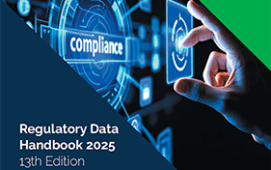The Securities and Exchange Commission has adopted rules requiring companies to provide financial statement information in XBRL (eXtensible Business Reporting Language) to improve the information’s usefulness. This is an overview for companies that are required to begin submitting XBRL data during 2011 and summarises some of the main process issues, lessons learned to date and resources for further information.
XBRL allows computers to read financial information and use it in analytical tools, much like bar codes applied to merchandise are used for computerised inventory controls. In order to create an XBRL submission, filers must select tags from the US GAAP taxonomy which best represent their financial reporting concepts. The selected tags are then attached to the filer’s financial information by software programs or third-party service providers to complete the XBRL submission. XBRL helps to provide investors access to financial information in a form that’s ready for analysis, and can help companies automate checks on the data quality in their reports.
Over the past two years, the largest SEC reporting companies have begun submitting financial information in XBRL. All other public companies using U.S. GAAP, with only a few exceptions, are required to submit XBRL for periods ending on or after June 15, 2011. There are several different ways to create XBRL submissions, ranging from do-it-yourself to outsourced models, and there are a growing number of software and service providers with products at various price points. Ultimately, you should choose a solution that matches your company’s resource and expertise requirements based on an evaluation of the available options.
Program Phase-In
The XBRL rules adopted by the Commission include a number of features to ease the implementation process. The rule requirements are being phased in over time based on company size, including a phase-in of the amount of detailed information to be provided in XBRL format. In a company’s first year of XBRL compliance, each amount in the primary financial statements is tagged in XBRL, and each note to the financial statements and certain financial schedules are individually tagged as a block of text. In the second year of compliance, each amount in the notes and financial schedules must also be tagged in XBRL. The rules also include two permissible grace periods: a 30 day grace period for a company’s initial submission, and in the following year a 30 day grace period for a company’s initial detail tagged submission. The rules also include modified liability provisions for the first two years a company is required to provide XBRL submissions. The modified liability provisions are eliminated entirely on October 31, 2014.
Lessons Learned
One of the benefits of a phased implementation is to allow companies and service providers to continue to develop and to learn from the experiences of the early adopters. Over the past two years, the SEC staff has gained insights into several key issues that may affect a company’s experience in complying with the rules and the quality of their XBRL submissions:
· Data quality – At the core of the XBRL tagging process, selecting the best tags to represent the information in your financial statements is the most critical part of the process. Carefully selecting the best tags is likely to be the greatest contributor to the quality of your XBRL submission. Some tips on how to select the best tags can be found in the Interpretive Guidance section on http://xbrl.sec.gov/.
· Viewing submissions – The SEC’s free previewer allows you to view your submission before filing to see what it will look like on the SEC’s website. However, this rendering of your XBRL submission will NOT exactly visually match your corresponding HTML submission, and there is no requirement for it to do so. You should NOT make changes to your tagged data solely to achieve a particular visual effect. The previewer may be one of the tools used to help verify the completeness of your XBRL submission, but relying solely on the rendered document to review your tagged data will not identify all of the details necessary to assess potential filing errors. Your software vendor or service provider may be able to provide reports that will help you review these other aspects of your submission, including validation results.
· Validation – Although selecting the correct tags is the most critical aspect of the process, if your XBRL submission is not technically valid it will not be accepted by the EDGAR system. Consider using the validation tools from your vendor and the SEC test filing mechanism to make sure your submission is technically valid before filing.
Subscribe to our newsletter




